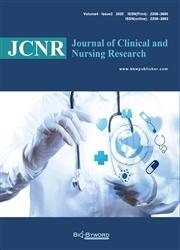Clinical Efficacy of Dienogest and Levonorgestrel-Releasing Intrauterine System in the Treatment of Adenomyosis
引用次数: 0
Abstract
Objective: To compare the clinical efficacy and adverse reactions of dienogest and levonorgestrel-releasing intrauterine system in the treatment of adenomyosis. Methods: A total of 60 cases of adenomyosis admitted to Dezhou Women and Children’s Hospital from January 2020 to October 2021 were selected and randomly divided into two groups (Group A and Group B), which were initiated on dienogest and levonorgestrel-releasing intrauterine system, respectively. The therapeutic effects and adverse reactions of the two groups were analyzed. Results: After 6 months of treatment, the uterine volume in the LNG-IUS group reduced slightly compared with that before treatment, with no statistical significance (p > 0.05), while that in the DNG group increased slightly compared with that before treatment, with no statistical significance (p > 0.05). After 6 months of treatment, the hemoglobin of patients in both groups increased compared with that before treatment; there was no significant difference in the DNG group (p > 0.05), but there was significant difference in the LNG-IUS group (p < 0.01). After 6 months of treatment, the VAS scores of the two groups were significantly lower than those before treatment (p < 0.01); the serum CA125 level in both groups decreased significantly compared with that before treatment (p < 0.01). Conclusion: Mirena (levonorgestrel-releasing intrauterine system) has better therapeutic effect on adenomyosis and fewer adverse reactions than deinogest.炔诺孕酮和左炔诺孕酮释放宫内系统治疗乙型脑出血的临床疗效
目的:比较地诺孕酮与左炔诺孕酮释放宫内系统治疗乙型脑出血的临床疗效及不良反应。方法:选择2020年1月至2021年10月在德州妇幼医院收治的子宫腺肌症患者60例,随机分为A组和B组,分别开始使用地诺孕酮和左炔诺孕酮释放宫内系统。分析两组患者的治疗效果及不良反应。结果:治疗6个月后,LNG-IUS组子宫体积较治疗前略有缩小,差异无统计学意义(p > 0.05); DNG组子宫体积较治疗前略有增大,差异无统计学意义(p > 0.05)。治疗6个月后,两组患者血红蛋白均较治疗前升高;DNG组间差异无统计学意义(p < 0.05), LNG-IUS组间差异有统计学意义(p < 0.01)。治疗6个月后,两组患者VAS评分均显著低于治疗前(p < 0.01);两组患者血清CA125水平均较治疗前显著降低(p < 0.01)。结论:mrena(释放左炔诺孕酮的宫内系统)治疗子宫腺肌症疗效好,不良反应少。
本文章由计算机程序翻译,如有差异,请以英文原文为准。
求助全文
约1分钟内获得全文
求助全文

 求助内容:
求助内容: 应助结果提醒方式:
应助结果提醒方式:


